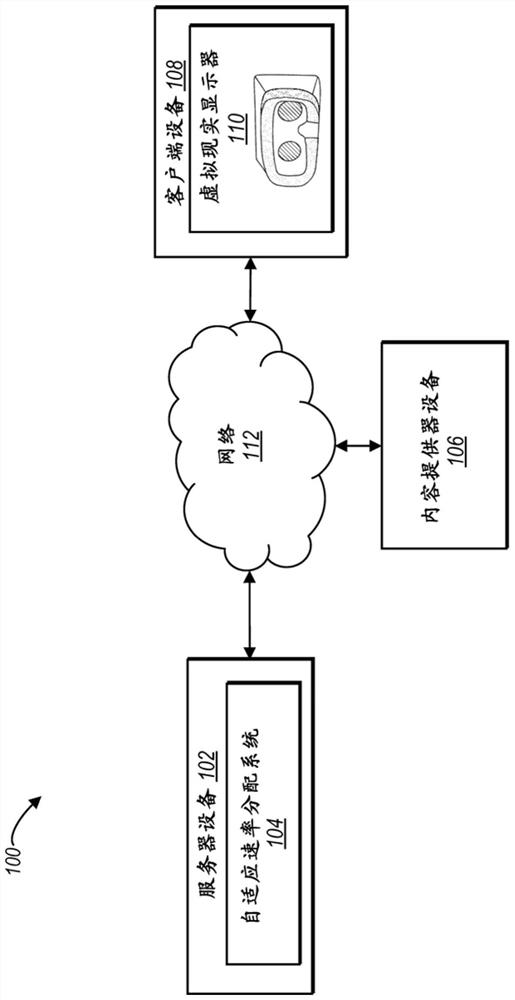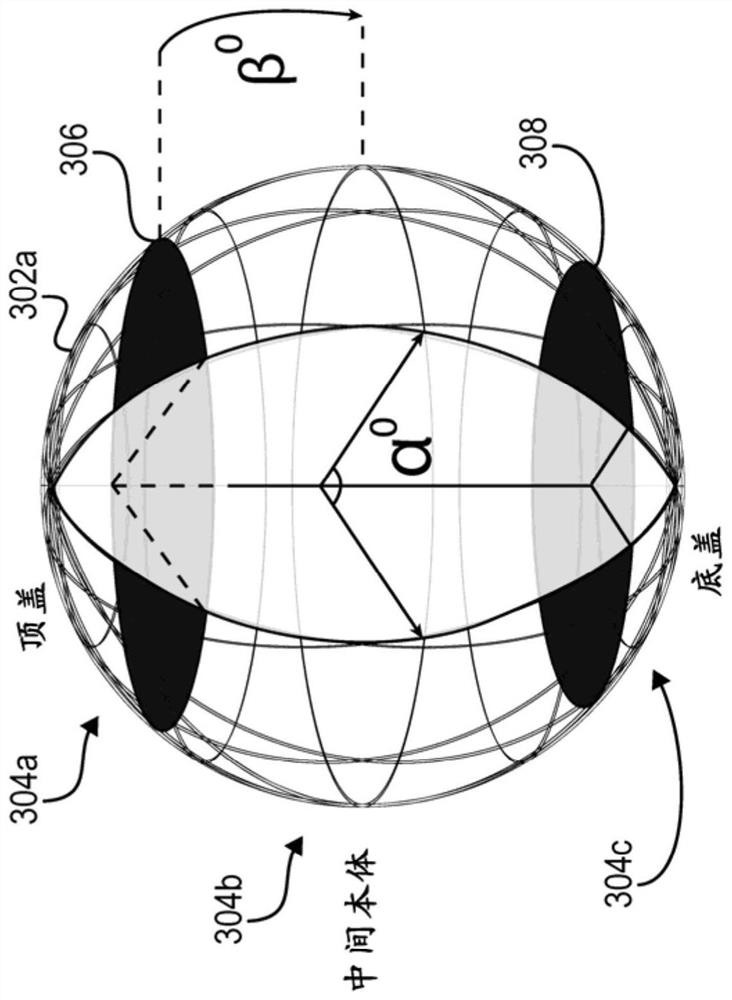Prioritizing tile-based virtual reality video streams with adaptive rate allocation
A virtual reality, tile technology, applied in the input/output process of data processing, image data processing, electrical digital data processing, etc., can solve problems such as large storage capacity and infeasible solutions
- Summary
- Abstract
- Description
- Claims
- Application Information
AI Technical Summary
Problems solved by technology
Method used
Image
Examples
Embodiment Construction
[0022] One or more embodiments of the present disclosure include an adaptive rate allocation system that provides bandwidth management for high performance virtual reality video streaming. Specifically, in one or more embodiments, the adaptive rate allocation system splits the virtual reality panoramic video into multiple segments, and prioritizes each segment based on the user's current field of view to priority and corresponding rate allocation to stream each segment. In this way, the adaptive rate distribution system improves the streaming of virtual reality panoramic video over that of conventional systems. Further, the adaptive rate distribution system delivers higher quality content to areas in the panoramic video that the user is currently viewing / most likely to view and lower quality content to areas outside the user's view.
[0023] To illustrate, the adaptive rate allocation system accesses or receives virtual reality panorama video (or simply "panoramic video") to ...
PUM
 Login to View More
Login to View More Abstract
Description
Claims
Application Information
 Login to View More
Login to View More - R&D
- Intellectual Property
- Life Sciences
- Materials
- Tech Scout
- Unparalleled Data Quality
- Higher Quality Content
- 60% Fewer Hallucinations
Browse by: Latest US Patents, China's latest patents, Technical Efficacy Thesaurus, Application Domain, Technology Topic, Popular Technical Reports.
© 2025 PatSnap. All rights reserved.Legal|Privacy policy|Modern Slavery Act Transparency Statement|Sitemap|About US| Contact US: help@patsnap.com



